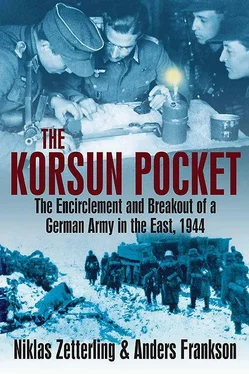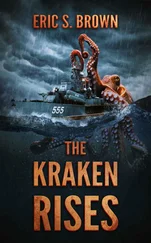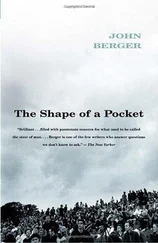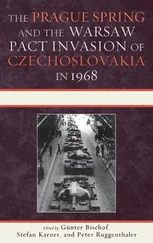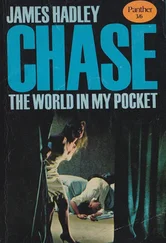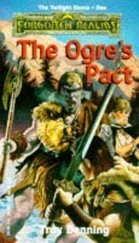On 22 January the Germans continued to observe Soviet reinforcements moving in against the VII Corps. Three or four antiaircraft batteries were observed and this led the Germans to assume that the Red Army was preparing an offensive that was more ambitious than the attacks with limited objectives that had been conducted during the last week. In particular, German observers suspected that the newly-arrived Soviet forces might be part of a two pronged attack—with the other prong advancing from the Kirovograd area—that aimed to cut off the salient around Korsun. Since the option to withdraw from the Korsun salient had been rejected by decisions made at OKH or higher, the 1st Panzer Army could only hope that its imminent attacks would diminish the Soviet ability to create a grouping strong enough for an attack aimed at cutting off the Korsun salient. 41
For the XXXXII Corps the preceding days had been calm, but on 23 January a major Soviet attack hit the 88th Infantry Division, along the main road from Tarashcha to Zvenigorodka. Hard fighting ensued around Koshevatoye, which fell to Soviet forces after a bitter struggle. They pushed on to Luka and the Germans were forced to detach one battalion from Korps-Abteilung B to shore up the defenses. In addition, four Soviet attacks were directed against Krutiye Gorby, some six kilometers to the south, but the German defenders managed to hold on to their positions. 42
A major reason for the inability of the XXXXII Corps to repel the Soviet attacks was its weakness; on 22 January it only had two divisions, neither of which could be described as regular. The 88th Division had only five infantry battalions, while the Korps-Abteilung B had six. 43This was very little to hold a front sector of more than 100 kilometers. Except for its two divisions, the XXXXII Corps had little combat power to offer: a security regiment with two battalions, an infantry battalion, and a light field howitzer battalion. The security battalions were actually intended for rear area security and anti-partisan operations, but the extended front forced Lieb, the commander of XXXXII Corps, to use them in the front line, at the 88th Division sector. Perhaps the situation could have been somewhat better if plentiful artillery had been available, but the XXXXII Corps was weak in this respect too. The 88th Division and Korps-Abteilung B had only eight and 11 artillery batteries, respectively; woefully inadequate to effectively cover such extended frontlines. 44
The German VII Corps further south was stronger and had a shorter front to hold. Nevertheless, it too had its troubles. The Soviet attack that seemed imminent was at least somewhat countered by the Luftwaffe, which directed Stuka attacks against the Soviet preparations in the Tinovka area. However, the cut off Soviet units at Tikhonovka presented another problem. On 23 January a Kampfgruppe from 82nd Infantry Division managed to squeeze them into a smaller area, thus bringing the situation under control. However, it was unclear if these Soviet forces could be eliminated before the major Soviet attack that now seemed imminent. It was imperative that the area be secured before the morning of 25 January, since that was when the 82nd Division was supposed to be sent to the III Panzer Corps, which was preparing to launch Operation Watutin in conjunction with the XXXXVI Panzer Corps. 45
The Soviet Build-up, 24–26 February
There were no significant Soviet attacks against the VII and XXXXII Corps on 24 January. However, the Germans observed further build-up by the Red Army in the Tinovka–Bashtechki area and also around Koshevatoye. Since prisoner interrogations had revealed that the Soviet 5th Guards Tank Corps and 5th Mechanized Corps were assembled in the Tinovka area, the Germans concluded that the Soviet main effort would be against the 34th Infantry Division, and hurried reinforcements to the threatened sector. They estimated that the Soviet preparations were almost finished and that a major attack could be expected very soon. 46
The signs of build-up were corroborated by a Soviet deserter, a lieutenant from the antitank battalion of the 359th Rifle Division, who revealed that he had seen about 70 tanks in Tinovka. He also disclosed that the initial aim was Vinograd and that the projected attack date was 25 or 26 January. The German picture of the enemy intentions became more and more clear. 47
In the meantime, the Kampfgruppe from 82nd Infantry Division continued its attacks on the cut-off Soviet units, which were pushed into Tikhonovka. The Kampfgruppe itself was not particularly strong, but it was supported by seven artillery batteries, and the Luftwaffe made strong efforts to provide close air support. Still, the Germans lacked sufficient strength entirely to eliminate the Red Army force, which was supplied by Soviet air power. 48
On 24 January the German XXXXVI Panzer Corps began the attack against the Soviet 1st Tank Army. Hube could only hope that this would put such pressure on the 1st Ukrainian Front that the latter’s plans would either be shelved or reduced in scope. 49
The XXXXVI Panzer Corps continued its attacks and was joined by the III Panzer Corps on 25 January. However, the 1st Panzer Army noted that it was very concerned about the threat to VII and XXXXII Corps and urged the two Panzer corps to attack with the utmost speed and determination, to finish the offensive operation, and, as soon as possible to begin shifting units to the right flank of the army. Two Soviet tank corps were committed against the attacking German forces, a move which threatened the success of the operation. 50
In retrospect, it is clear that 1st Panzer Army correctly identified the main Soviet attack sectors and also that they were correct in assuming that the southern thrust, from the Tinovka area, would be the main effort. Furthermore, the Germans quite accurately predicted the date the Soviet offensive was to be launched and identified that its main objective was to cut off the German forces in the Korsun area.
Unfortunately for the Germans, the general situation on the Eastern Front resembled a dyke with many holes, but with few plugs available to arrest the flow of water. Unlike water, which continues to put pressure on a wall even if it is moved back, military forces may require time before they can reapply pressure. If the XXXXII Corps had been withdrawn to the more defensible area around the Rossava River, it would have taken some time for the Red Army to bring up forces and supplies. Since Hube was required to hold his position, however, he was left with only two alternatives: he could either use his Panzer divisions to attack the 1st Ukrainian Front, or he could keep them as a reserve ready to counterattack a Soviet offensive operation. In reality, the latter was hardly a choice at all. Any army commander who had a number of Panzer divisions standing in reserve was likely to be ordered to send them somewhere else, since there was always a need for Panzer divisions on many sectors of the Eastern Front.
The Situation for 8th Army, 22–23 January
On the sector of front covered by 8th Army, 1st Panzer Army’s eastern neighbor, the XI Corps held a position somewhat similar to XXXXII Corps. The XI Corps was considerably stronger, but also had a longer front to defend. The northern part of the front did not lend itself to large-scale operations, since the area was swampy and large tracts of forest created difficulties. Also, the Tyassmin River could be used to advantage by the defender. The sector held by the XI Corps south of the Tyassmin River was more open though, and here the German 389th Infantry Division, a unit that had been destroyed at Stalingrad one year earlier, formed its defense. The division had been reformed in Brittany and sent to the Ukraine in the fall. In fact, the XI Corps also had been encircled at Stalingrad and its commander, General der Infanterie Karl Strecker, had been among the men who went into Soviet captivity.
Читать дальше
